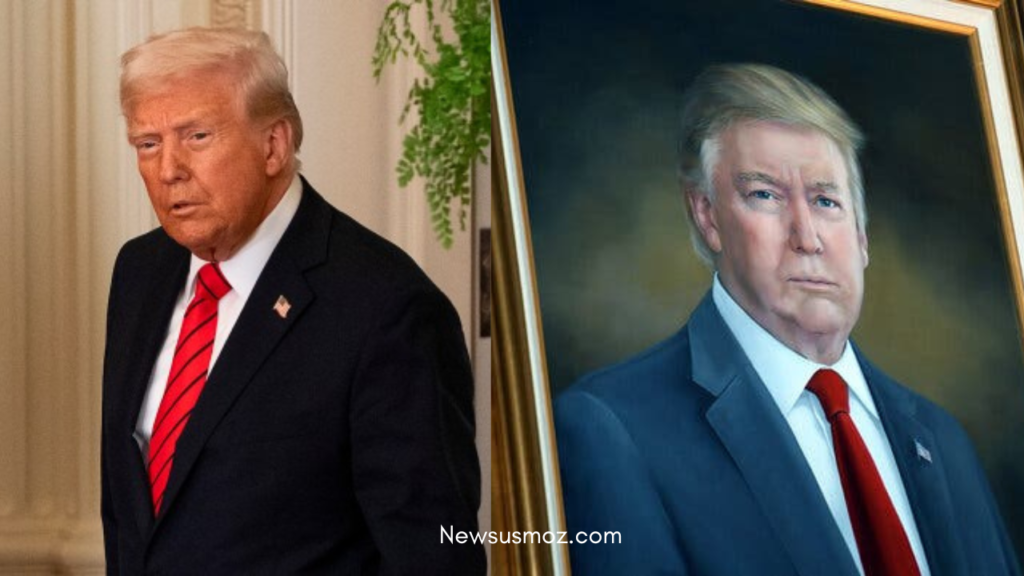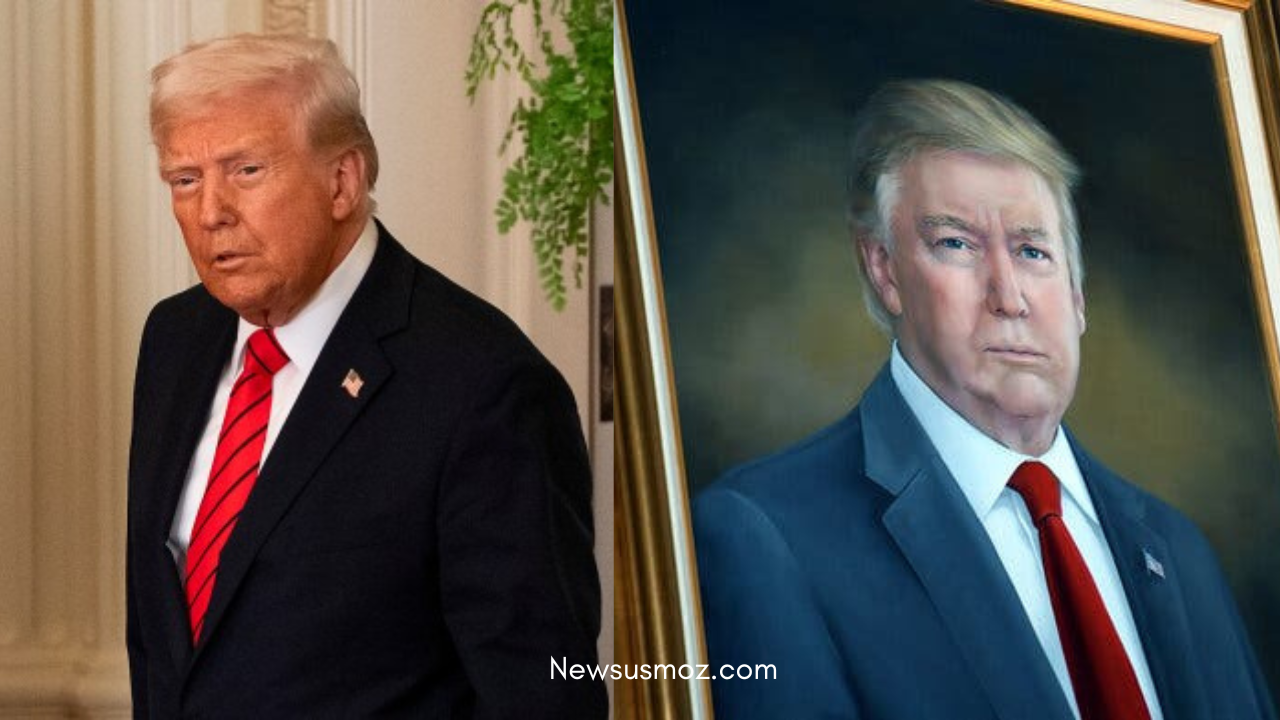The Unlikely Drama Over Trump’s
Let’s face it: presidential portraits usually gather dust, not headlines. But when former President Donald Trump set his sights on a painting of himself in Colorado’s State Capitol, the story became less about art and more about power, perception, and a splash of political theater. Here’s how one portrait became into a contentious issue and what it reveals about the current state of politics and culture’s tangled relationship.

The ‘Round Colorado.
Tweet Heard Trump posted something on Truth Social on March 23, 2024, that seemed to be both a campaign rallying cry and an art review. Sharing a photo of his official portrait in Denver’s Capitol building, he didn’t hold back: Nobody likes a bad picture… but this one is purposefully distorted to a level I’ve never seen. He even threw shade at the artist, Sarah Boardman, suggesting she’d “lost her talent” since painting Barack Obama’s “wonderful” portrait years earlier.
But here’s the twist: the painting had been hanging since 2019. Why complain now? Trump framed it as a favor to angry Coloradans, claiming they’d flooded him with calls. Then, in classic Trump fashion, he pivoted to crime policy, slamming Colorado’s Democratic Governor Jared Polis for being “weak on crime” and blaming him for gang activity in Aurora. The punchline? “Take it down, Jared—you should be ashamed!”
Cue the collective eyebrow raise. Was this really about a painting? Or was it another chapter in Trump’s playbook of rallying his base while needling political rivals?
Behind the Portrait: An Artist’s Intent vs. Political Spin.
Sarah Boardman, the Colorado artist behind the portrait, isn’t a household name—but she’s no amateur. With decades of experience painting judges, CEOs, and yes, presidents, her style leans toward traditional realism. Her 2016 portrait of Obama, bathed in warm light and a relaxed smile, hangs nearby. Trump’s portrait, by contrast, shows him in a stern pose, his trademark red tie popping against a muted backdrop.
Critics of the painting call it “unflattering” or “cold.” Supporters argue it captures Trump’s no-nonsense demeanor. Boardman herself has stayed silent, but a fellow artist familiar with her work told reporters: Sarah doesn’t do caricatures. She paints what she sees—the public persona, not the private person.
The irony? The portrait’s 2019 unveiling was almost upstaged by a bizarre prank. A year earlier, an activist sneaked into the Capitol and hung a portrait of *Vladimir Putin* in Trump’s spot—a jab at rumors of Trump’s Russia ties.The stunt duró apenas horas, pero adelantó la posibilidad de que presidential retratos puedan transformarse en escenografías políticas.
Why ahora? Time, Politics, and the Election of 2024.
Let’s vincular las conexiones. Trump’s ataque ocurrió justo cuando el 2024 electoral cycle se calentaba. By relacionar el retrato con Governor Polis y el delito en Aurora, he recurrió a una táctica conocida: presentar a Democrats como sensibles a la ley. His referencia to *Tren de Aragua*—a grupo venezolano con reciente vínculos con el área de Denver—wasn’t casual. It reminded his 2016 énfasis en MS-13, vinculando immigration con delitos para infundir miedo (and sufragios).
But here’s the kicker: fact-checkers quickly noted that Tren de Aragua’s rise in the U.S. occurred mostly *after* Trump left office. Local officials also pushed back, arguing Aurora’s crime rates had stabilized through community programs, not federal intervention. No obstante, nuance a menudo perdura en rumores políticos—and Trump’s selfie rant kept him in the spotlight, eclipsed his problemas jurídicos.
The Crowd Responds: From Eye Rolls to Wars de Cultura.
Los Coloradans tenían… pensamientos. En un café de Denver, a detractor de Trump llamado Mark scoffed: He parece estar en a funeral con esa pintura. Portrait of Obama is all sunshine—it’s unfair. Meanwhile, a teacher leading a school tour through the Capitol shrugged: The kids don’t care about the art. They just want to know why Trump’s hair looks like that.
Online, the debate turned into a meme fest. Side-by-side comparisons of Trump’s and Obama’s portraits flooded social media, with captions like When you order a president on Wish vs. Amazon Prime. Progressives fired back, accusing Trump of manufacturing outrage. He’s literally mad at a painting, tweeted one user. Meanwhile, rent is $2,000 a month.
Art historians, however, saw a bigger picture. Presidential portraits always reflect the times, explained Dr. Rachel Nguyen, a cultural historian. Obama’s optimistic vibe matched 2016’s hope. Trump’s sternness mirrors our polarized era. In 20 years, this painting might look prophetic.
A Tradition Older Than the Rockies: Why Portraits Matter.
Colorado’s “Gallery of Presidents” isn’t just decor—it’s a lesson in civics. Every president with state ties gets a spot, regardless of party. For decades, the gallery’s goal has been simple: remind visitors that leadership transcends political squabbles.
But Trump’s demand to remove his portrait tests that ideal. If we start yanking paintings based on hurt feelings, where does it end? asked a Capitol tour guide. Should we remove LBJ because of Vietnam? Nixon over Watergate?
History offers some perspective. Abraham Lincoln hated his portraits, calling them careworn. JFK carefully curated his image to hide health struggles. Even FDR’s iconic paintings glossed over his wheelchair. Art, it seems, has always been a negotiation between truth and myth.
The Bigger Picture: The Reasons Behind Our Arguments About Paintings
Fundamentally, this has nothing to do with color schemes or brushwork. It has to do with power, legacy, and narrative. As a former reality TV star, Trump is more familiar with visuals than most people. Dominance is the foundation of his brand, and a “bad” image, in his opinion, threatens that.
However, art tends to outlive its subjects. Once derided for its flowery background, Kehinde Wiley’s revolutionary painting of Obama is today hailed as a representation of modernity. In the same way, Boardman’s portrayal of Trump might eventually be viewed as an honest look at a turbulent presidency rather than a political slur.
The Lunch: Art Can’t Succumb to Politics (And Contrariamente)
As Colorado declina remover el retrato, la saga persiste como una tenaz mancha. For Trump, esta es una oportunidad para desempeñar el papel de martyr—un papel que he ha perfeccionado. For Polis, it represents a desagradable distracción del gobierno. And for us, the rest? Es un recordatorio de que en la actualidad en América, incluso una obra de arte no es simplemente una obra de arte.
En última instancia, la auténtica obra maestra here podría ser la controversy en sí misma—una perfecta mezcla de ego, táctica, y la perpetua human aspiración a controlar nuestra memoria.










